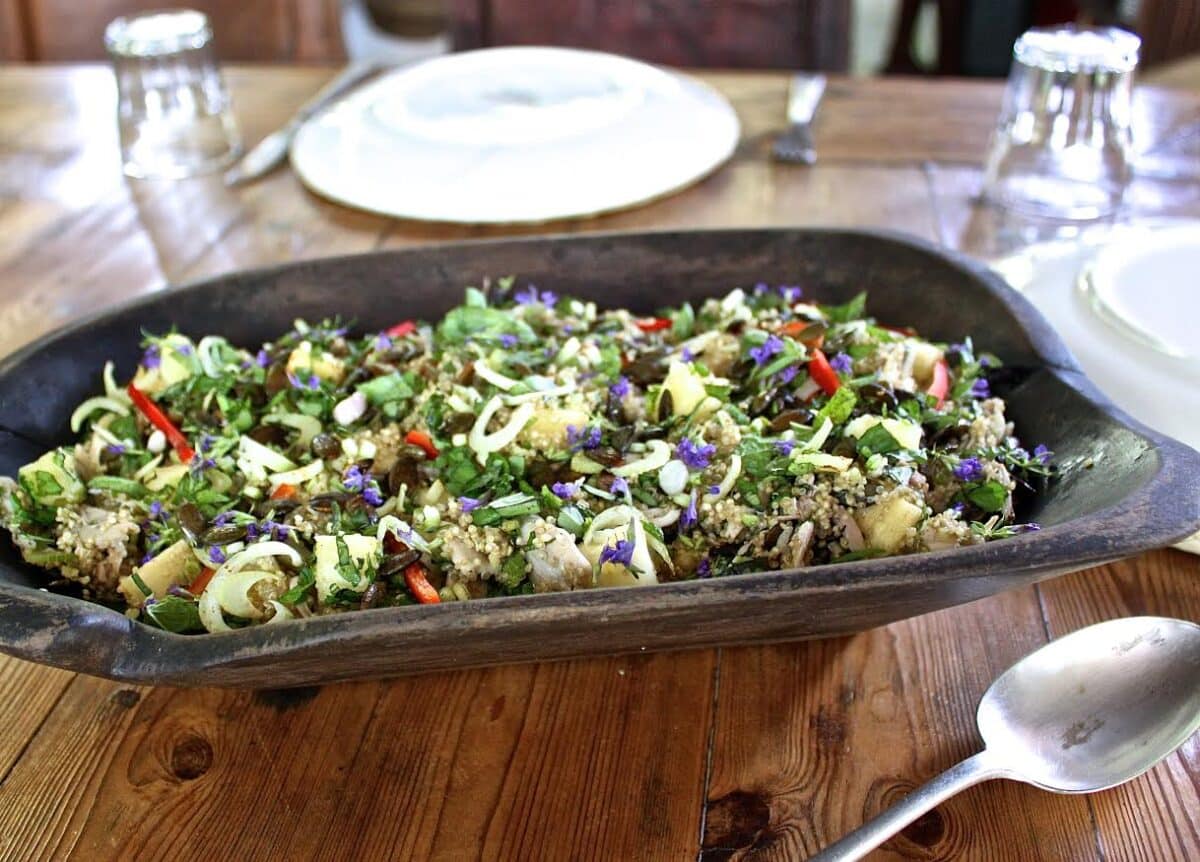Ingredients
- •237 ml (1 cup) chicken stock
- •237 ml (1 cup) quinoa
- •237 ml (1 cup) chicken thigh meat, chopped into bite-size pieces
- •1 medium fennel, finely sliced (keep some of the fennel feathers for the herb mix below)
- •1 medium red pepper, finely sliced
- •59 ml (¼ cup) spring onions, finely sliced
- •237 ml (1 cup) pineapple, chopped into bite-size pieces
- •118 ml (½ cup) pumpkin seeds, fried in 2 tablespoons olive oil
- •Large handful basil/mint/fennel feather mix, roughly chopped (save 1 tablespoon for garnish)
- •Salt and pepper to taste
- •Hyssop flowers for garnish
- •Optional: 15 ml (1 tablespoon) olive oil + 15 ml (1 tablespoon) lemon juice (for a side dressing)


Preparation
Combine the chicken stock with 237 ml (1 cup) water in a medium saucepan and bring to a boil.
Rinse the quinoa in a sieve under cold water until it runs clear, drain, and add to the boiling liquid. Reduce to a simmer, cover and cook until it has been absorbed by the quinoa, about 15 to 20 minutes. Set aside and cool.
Gently combine the chicken, fennel, red pepper, spring onions, pineapple, pumpkin seeds, and the herbs in a large mixing bowl.
Gently fold in the cooled quinoa, and season the salad with salt and pepper.
Transfer to a serving platter, and garnish with hyssop flowers and the remaining chopped herbs.
Whisk together olive oil and lemon juice for a dressing on the side, if the salad is too dry for your taste.

